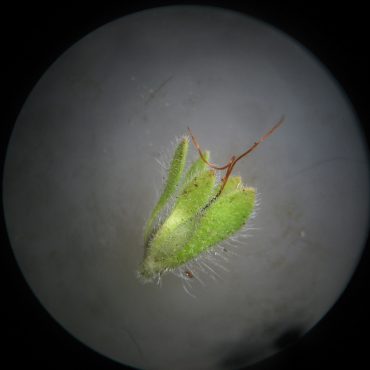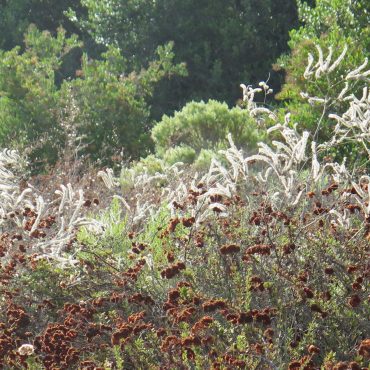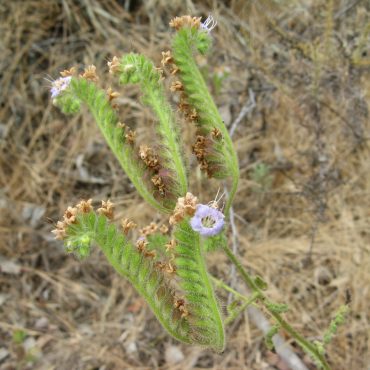Branching phacelia (also called wild heliotrope, scorpion weed or caterpillar phacelia: Phacelia ramosissima) is a widespread native perennial of the west coast. Like the flowers of related species, such as popcorn flower and yellow fiddleneck, the flowers of branching phacelia are crowded along one side of a coiled stem. As the stem uncoils, small white or pale lavender flowers open at the apex of the coil, developing into fuzzy seed pods along the straightened stem. Ultimately, each flower stem resembles a big green caterpillar (with a flower on its head).
Branching Phacelia
Phacelia ramosissima
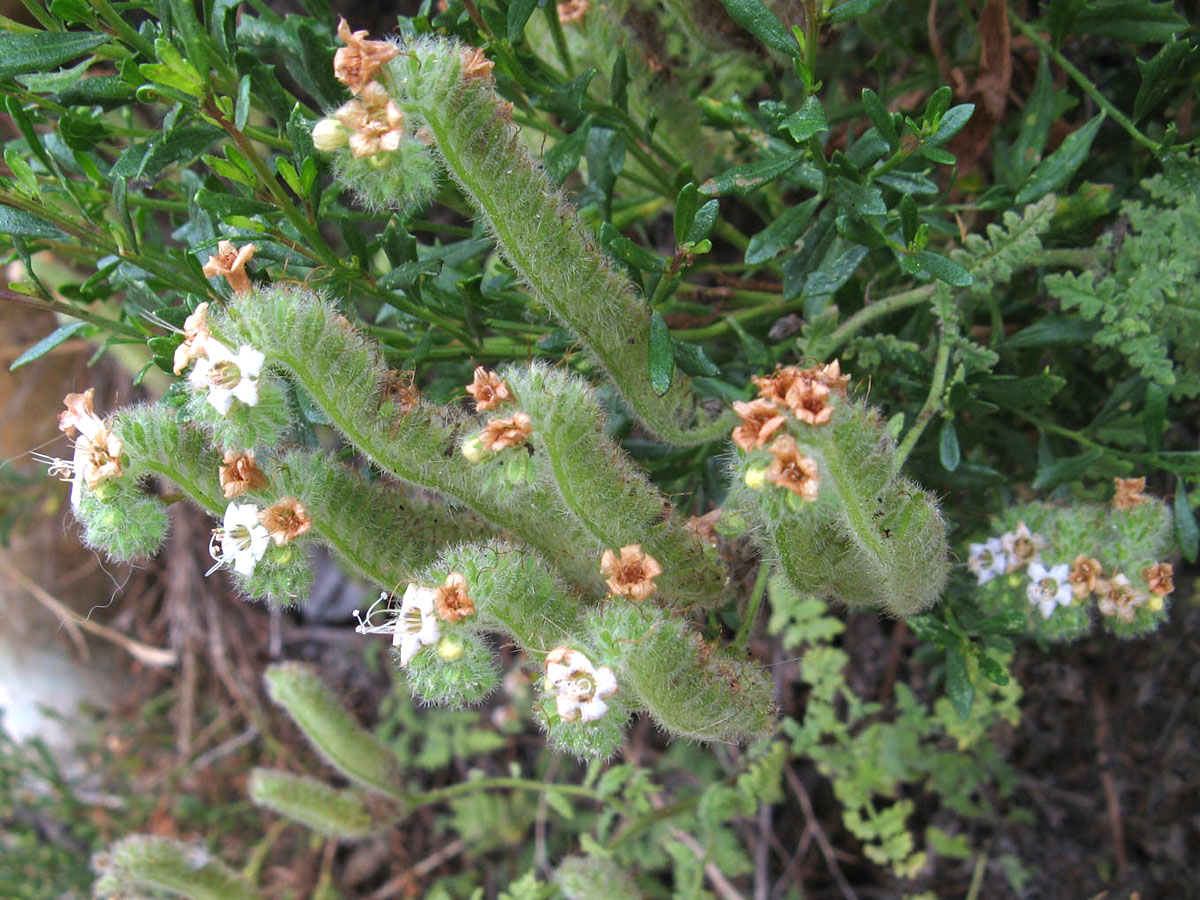
Other Common Names:
Wild Heliotrope, Caterpillar Phacelia, Scorpion Weed
Description 4,11,23,26,59,249
Branching phacelia is a sprawling, untidy, perennial subshrub with several long branching stems from the base. The principle stems are up to five feet (0.5-1.5 m) long. Although somewhat woody, the weak stems gain support by tangling with each other or from leaning on adjacent plants. The larger leaves may be eight inches (20 cm) long, pinnately lobed or compound with the leaflets deeply, often irregularly, lobed or toothed. All parts of the plant are covered with stiff, erect, sharp hairs (trichomes), some of which are glandular, releasing a sticky exudate.
Flowers are produced along a coiled stalk (a scorpioid cyme) with developing buds in the center of the coil. As the stalk unfurls, new flowers open at the apex of the flower while fruits develop along the straightened older stalk; an older flower cluster often has the look of a fuzzy caterpillar. Flowers are bisexual and radially symmetrical with a deeply, five-lobed calyx and a five-lobed bell-shaped corolla. The petals of our plants are mostly white or lavender-tinged, with five dark, purple spots in the throat. All-purple flowers are reported to occur elsewhere. As the flower matures, the lobes reflex backward and the petals begin to turn brown. Withered, brown petals remain on the flower stalk for some time, giving the entire structure an unkempt appearance. There are five long stamens clearly visible extending beyond corolla. The pollen is lavender. The pistil consists of one superior ovary, also covered with stiff hairs, There is a long forked style that is visible beyond the corolla and matures after the pollen has been shed. The style branches are slim, with minute stigmas; the styles are white, turning lavender near the ends and remaining on the developing fruit. Most flowers occur April through October.1
The seed capsule matures within the persistent calyx. The mature capsule is a dull brown and hairy, especially at top, and splits open to release up to four small seeds.
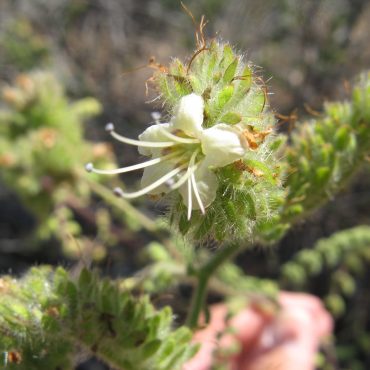

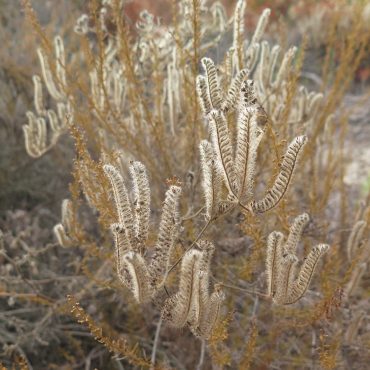
Distribution 7,11,59,89
Branching phacelia is a common, widespread plant native to the western North America from northern Baja California to Vancouver, Canada. In California it is found from the coast to valleys, foothills and mountain slopes, occasionally above 10,00 feet (3000 m.).
In the Reserve, branching phacelia is often seen scattered in small groups along the south side trails, especially east of the freeway.
Learn more about plant vegetation types here
Classification 2,59,422
Branching phacelia is a dicot angiosperm in the borage family (Boraginaceae). Typical plants in the borage family are covered by small, stiff hairs, and have flowers that develop along a coiled stalk. Species of Phacelia were previously placed in the waterleaf family (Hydrophyllaceae), based on morphological characteristics. Subsequently, the availability of molecular data led to several reinterpretations of this relationship including the merging of the waterleaf family into the borage family. This is the system currently used by Jepson,2 the authority for this Plant Guide. In 2016, the Boraginales Working Group reevaluated the borage complex and recommended a separate waterleaf family.422 Many botanists have accepted this revision. Research into the relationships between the two families is continuing and the systematics may still be evolving.
Perhaps the best known members of the borage family are the ornamental forget-me-not, and borage, a leafy herb that is used in soups and salads and in herbal medicines.41 Other plants in the borage family that are found in the Reserve include fiesta flower(Pholistoma auritum), coast fiddleneck (Amsinkia menziesii) and common cryptantha (Cryptantha intermedia).48
The genus Phacelia contains approximately 210 annual and perennial species mostly with blue to purple flowers with stamens that project beyond the corolla.2 There are four species of Phacelia reported from the Reserve.48 Of these, the other common species is common phacelia (P. distans).
Several varieties of branching phacelia have been described but none are currently recognized.2,7
Jepson eFlora Page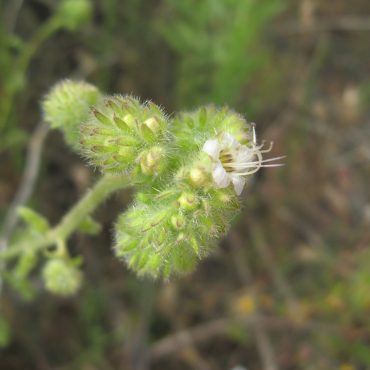
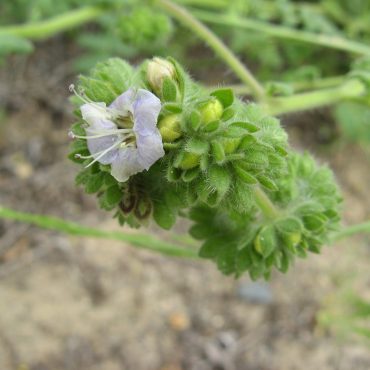
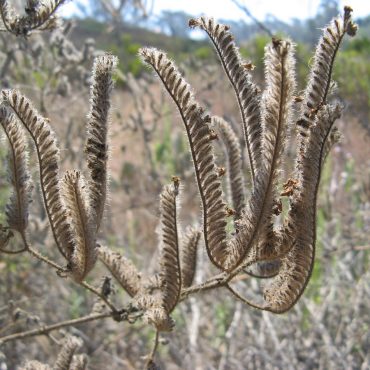
Ecology
The fierce-looking hairs (technically called trichomes) that cover all parts of branching phacelia (and most other Phacelia species) appear to defend against chewing and sucking insects and perhaps grazing mammals.41,217,415 Often, this physical barrier is augmented by glandular hairs. In species of Phacelia these secrete a chemicals with awkward names like geranyl hydroquinone. These sticky exudates have been shown to trap small insects and prevent their progress across the plant; they may also be distasteful or toxic to grazers and pathogens.415,416
Humans are the presumably unintended victims of this defense system.418 On contact with skin, geranyl hydroquinones, produce an allergic reaction very similar to that of poison oak – itchy blisters that may persist for a week or more. And like poison oak, sensitivity varies from person to person but may be induced by repeated contact.417,419 Something to keep in mind should you want to hug a fuzzy phacelia.
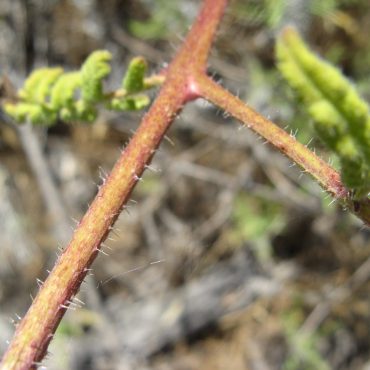
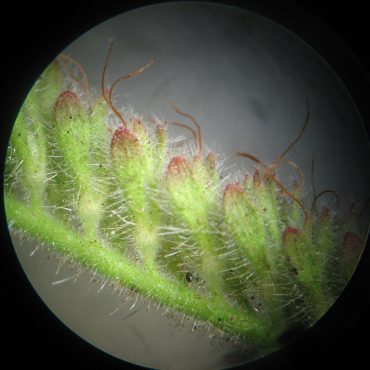
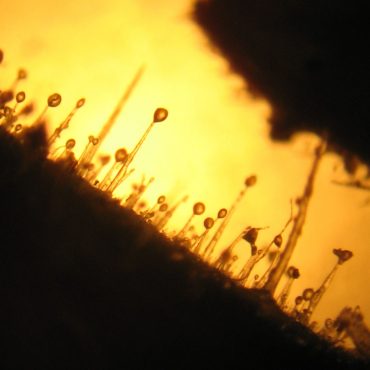
Human Uses
The Luisaño of Riverside and northern San Diego counties used branching phacelia as “greens”.17 The Kawaiisu, a native American tribe from Kern County, also used the young stems and leaves as a cooked vegetable. Greens were gathered before flowers appeared. They were laid on flat rocks with hot rocks placed on top and sprinkled with water to steam the plants.75
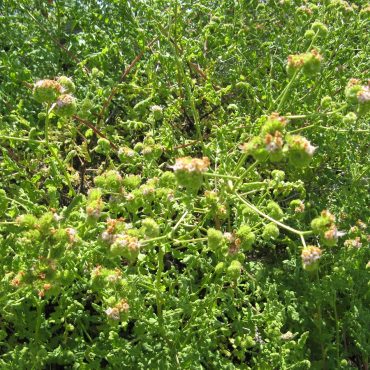
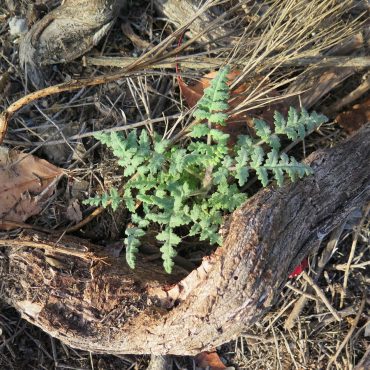
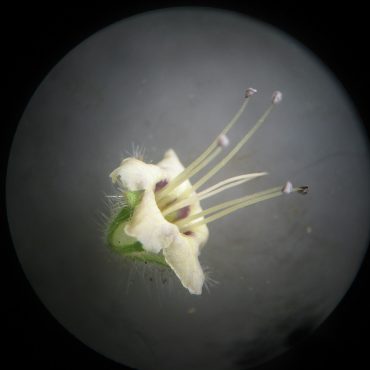
Interesting Facts
When I first encountered branching phacelia many years ago, it was introduced to me as caterpillar phacelia, and that name seemed so appropriate that it has firmly stuck- even after being advised, several years later, that all the local references refer to this species as branching phacelia, and they use the name caterpillar phacelia for a different species. By this time, I had taught the wrong common name to many Reserve visitors and fellow docents. How serious was my faux pax?
Fortunately for me, the common names of plants are not regulated,421 and species tends to accumulate different names according to their different local histories or geographical regions (or unintentional mistakes). Thus wild cucumber (Marah macrocarpa) is manroot or chilicothe, and sacred datura (Datura wrightii) is variously western jimson weed, toluaca, toloache or thorn apple. Our tarweed (Deinandra fasciculata) shares its common name with 11 other species in two different families. And branching phacelia, instead of having three common names, now has four.
On the other hand, in order to have meaningful conversation in the absence of the plant itself, botanists must carry in their head the full Latin name of each species. Contrast this with the policy of American birders who must learn the one common name for each species given by the American Ornithological society420 – leaving no room to incorporate regional quirks. As a reward for keeping up with common name changes, birders can communicate unencumbered by Latin.
